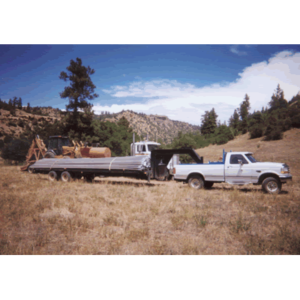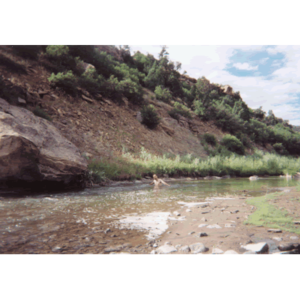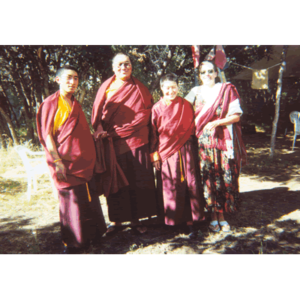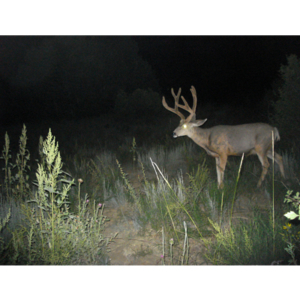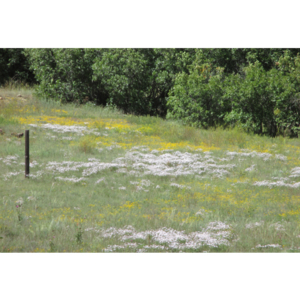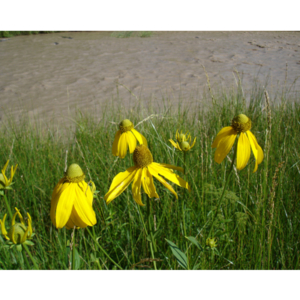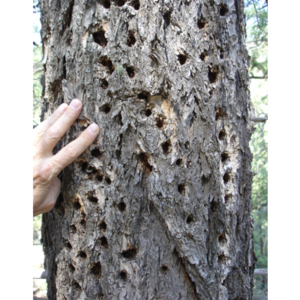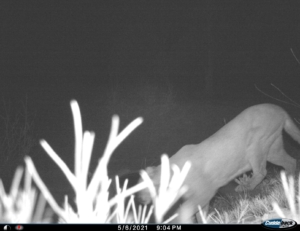Stone Rabbit Sanctuary lies on a beautiful 155-acre plot of land in Pagosa Springs, Colorado. Our Center is located on a sacred site and is build by an vedic architect. The Center will be in harmony with the environment, allowing members of the Foundation For Science and Spirituality a place to grow.
Directions
Milage from Pagosa Springs to:
Pagosa Springs, CO
Alamosa
Albuquerque, NM
Chama, NM
Cortez
Denver
Durango
24
89
213
51
105
272
60
Dulcey, NM
Farmington, NM
Grand Junction
Moab, UT
Santa Fe, NM
South Fork
7
109
229
221
155
42
Sacred Site
We are blessed with many gifts on the Stone Rabbit Sanctuary. Please click any thumbnail below to see the full-size image with a description.
pics
by Michael Borden, Our Vedic Architect
 When the Foundation for Science and Spirituality first called me about the design of the Stone Rabbit Sanctuary in Pagosa Springs, Colorado I was in the middle of a very intense design/build job in Southern China. My typical day was from 8AM to 7PM and I worked 7 days a week. It was a surprise to me that the first evening after I got back to my residence in China having spoken to Susan Young that day, I felt compelled to design a floor plan immediately for the project.
When the Foundation for Science and Spirituality first called me about the design of the Stone Rabbit Sanctuary in Pagosa Springs, Colorado I was in the middle of a very intense design/build job in Southern China. My typical day was from 8AM to 7PM and I worked 7 days a week. It was a surprise to me that the first evening after I got back to my residence in China having spoken to Susan Young that day, I felt compelled to design a floor plan immediately for the project.
The ideas just flowed out of me, or, rather, through me on to the paper. This was one of the most effortless and compelling design projects I have experienced. I sent the design to Susan within a few days and it was immediately accepted.
After returning to the USA, I had the opportunity to visit the land where the building would be erected. The energy on the property was quite strong, but, I was able to make the adjustment, probably with Susan’s help.
Inspection of the site is a very important aspect of architectural design. I have visited many sites and the Stone Rabbit site is quite unique and powerful. My feeling is that it will be a haven of healing and peace for all who visit.
The plan of a Vaastu residential building is technically called Vastu Purusha Mandala with a grid of 9 x 9 = 81 spaces of equal dimensions. In modern architectural terminology this can be addressed as an energy grid. These layouts are squares, two dimensionally, and cubes, tridimensionally. This layout is the geometrical formulae for the Vaastu architect to replicate the subtle substance of the universe into visual material form.
What is amazing to be remembered in this context is that they (forms produced by the application of Vaastu Science) are the forms (geometrical patterns) of the Spirit, reproduced in its own time-scale. They are the replicas of the subtle forms experienced at heart. They are living organisms that resonate with the Supreme Reality.
There are many factors at work in the creation of a building aligned with principles of Vastu Science. There are ancient texts with thousands of pages that dictate in detail the design necessities of buildings in general as well as specifics. For example in one text, the Mayamata, some of the chapter headings are as follows: Dwelling sites, Examination of the Site, Taking possession of the Site, System of measurements, Orientation, Offerings, Towns, Number of Stories and the Dimensions, The Foundation Deposit, The Base, Dimensions of Pillars and Choice of Materials, Entablature, Joinery.
Basic Principles
The design regime for the Vastu architect follows specific parameters:
- Orientation and site considerations
- Building Layout with regard to a grid called “Vastu Purusha Mandala”
- Dimensioning with regard to the client’s birth time
- Exterior door locations
- Brahmastan
- Room (function) Placement
- Height
Site
The selection of a building site is a very important factor in Vastu Architecture. The Earth is considered a living organism in Vastu Science. The Vastu Shastras address this energy contained in the Earth as Vaastu Purusha. Purusha means subtle energy that permeates the Earth and Vaastu is the material body that evolved out of the energy. In abstraction, Purusha is a subtle substance: which means universal consciousness or awareness. Vaastu: Earth is…a live material object suspended in (a sea) of space and existing as apart … of the Universal Being.
Site Slope
The general slope the site is very important. Sloping down to the East, North East or North is considered to be beneficial with the opposite having negative effects for the occupants of the structure. The position of water on the site or in relationship to the site is considered: Northeast being the best location for a body of water. Fencing a plot with acceptable proportions is also important. It is because when vast land is limited by boundary lines it takes a form. That is, formless takes a form.
Energy Grid
Of utmost importance is the orientation of the structure with respect to the cardinal points of the compass. According to Vastu Science, a network of energy lines covers the globe of the Earth: an energy grid. These lines are very similar to what we know as the longitude and latitude lines. The lines are conduits by which the energy concentrated at the center of the vital Earth flows out and spreads over the Earth. They are also lines of absorption of solar, lunar and stellar energies. The Earth pulsates with life and rays its energy through this grid system. Vastu Science relates that all planets are suspended or soaked in the ocean of space, which is the source of energy that sustains all embodied energies including man and other animate beings that live on the Earth.
The concept of the energy grid has been the ruling element of Vastu science in the domain of traditional designs pertaining to Indian architecture. The building plan is laid out with respect to an energy grid called the “Vastu Purusha Mandala”. One typical grid is 9 x 9, but there are many other traditional grid forms consisting of odd and even numbers. This grid can be made of squares or rectangles. When the grid plan of the structure is oriented to the cardinal points of the compass it is said to lie exactly over the earthly energy grid. (Establishing of the building grid in exact relationship to the cardinal points of the compass applies to temples. For secular structures, a residence, for example, it is best to rotate the structure about two degrees counter-clockwise to the north of true East for an East facing house and two degrees clockwise to the east of True North (not magnetic) for a North facing house. This if very important and must be carried out by a licensed surveyor and checked by the Vaastu architect.
Once the designer establishes the grid, he can lay out the walls and pillars of the building on this pattern. This establishes a kind of geometric congruency or harmony with the earthly grid. If the grid of the structure is in harmony with the Earth¹s grid, then the built space and the Earth respond harmoniously energetically. If there is any distortion, deviation or deflection in the grid lines of the proposed building grid and that of the Earth’s grid, then the built space is said to be in disharmony with the Earth’s energy grid system.
Vastu science holds that we are wedded to the Earth and constantly exposed to the energy fuming out of it. To be in harmony with this energy is the goal. Just as we, human beings, harbor in our heart an atom of Divine energy by which we are able to vibrate with life…the Earth also vibrates from within sending forth energy waves. The Vastu designer brings about harmony between the vibrations by implementing particular a mathematical order called Ayadi.
Ayadi
The knowledge of Ayadi is used by the designer to determine the effects of the physical structure on the individual. The homeowner is born under the influence of a particular birth star. The building is considered to be a living being and also has a birth star. Ayadi calculations attempt to harmonize the energies created by the influence of the birth star of the person and that of the building. When these energies are harmonized the dweller experiences material prosperity and spiritual well being. Ayadi is also said to be able to affect the fate of the individual.
The Brahmastan
Another significant element in a Vastu residence is the Brahamastan or central courtyard. In a grid of 9 x 9 it is the center nine units. It is the energy heart of the house. It is the lung of the house. This part of the house should always be left open and free of obstructing elements (pillars or walls) and mechanical services.
This provides the inmates of the house with beneficial spiritual energy. When there is a roof over the Brahmastan then there should be a natural light source, a skylight or cupola with windows, at the roof.
Room (related to function) location in the building is an important factor in Vaastu architecture. The location of a particular room defined by function is determined by respecting the particular element that rules that area of the building. Southeast corner is for kitchen with the cooking function set up such that one faces east while cooking. Southwest is for the Master of the house to sleep and work. Northeast is for the prayer or meditation room. These are the most important basic locations for functions. It’s best if toilets are located outside the “mother wall” of the house. The mother wall is the basic rectangular or square plan of the house not including any pop-outs.
Entry Door Locations
Entry door location is very important to Vaastu design because as one crosses the threshold of the house Mandala an energy is activated. The Vaastu architect places each entry door location such that the entry crossing generates a blessing energy.
Height
The Vaastu designer works with a basic proportional design strategy that is similar to the design proportions of the human body. In fact, the Vaastu Architect considers the building to be a living being and due all respect and consideration as such.
All of these elements were effortlessly incorporated into the Stone Rabbit Sanctuary Retreat Center. I look forward to witnessing the healing energies of this project enjoyed by all.






